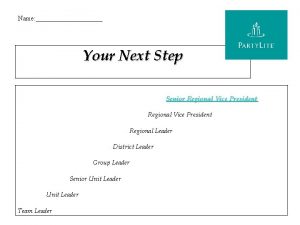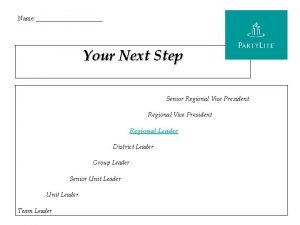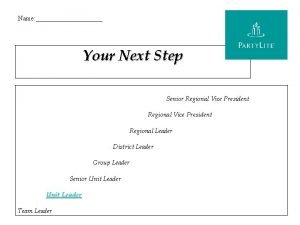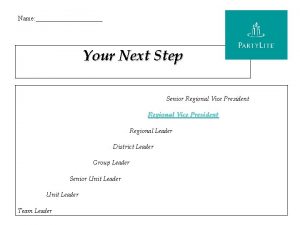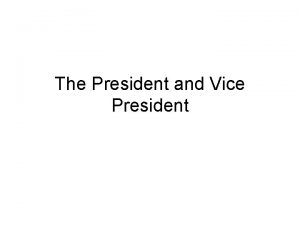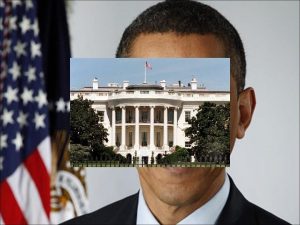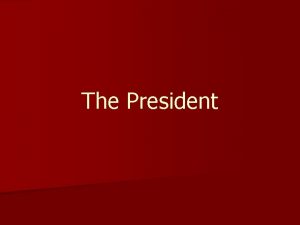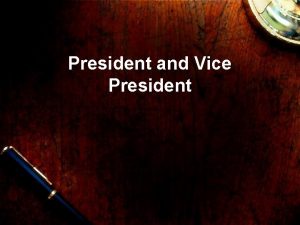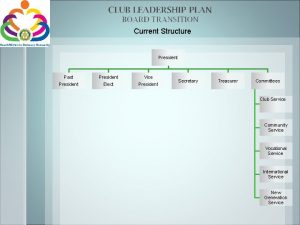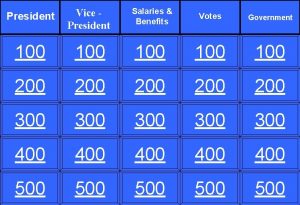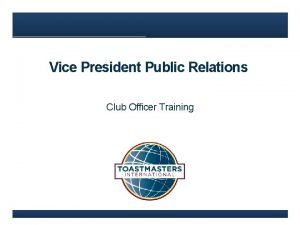The President and Vice President American Government Qualifications













- Slides: 13

The President and Vice President American Government

Qualifications According to Article II Section 1 of the Constitution, the formal requirements to become president are You must be a natural-born citizen of the U. S. You must be at least 35 years old You must have been a resident of the U. S. for at least 14 years before taking office These same requirements apply to the Vice President.

Informal Requirements Here are some of the informal requirements to become president Previous governmental experience Previous Senator, Representative, Governor etc. Access to large amounts of money A more moderate political disposition Mostly middle class, protestant

Salary and Benefits Salary: $400, 000 Travel Allowance: $100, 000 (for official duties only) Salary can not be changed during a presidents term. Benefits Air Force One, other planes, helicopters, and limos for transportation



Salary and Benefits: The president receives free health care Lives in the White House Has a cooking staff and domestic staff Receives $148, 000 a year for retirement Is given free office space Free mailing services Up to $96, 000 a year for office help

Roles of the President The president is the Commander in Chief of the military This means that the president is in supreme command of a country’s armed forces The president is in charge of war and peacetime strategies of the armed forces Another one of the main roles of the president, is as the country’s Chief of State This means the president represents the nation and performs many ceremonial roles I. E. visiting kings and queens, and other heads of government

Roles of the President The president is also the nation’s Chief Executive The president is responsible for executing the laws that are passed by Congress The president may go as far as even using the military in order to enforce laws passed by Congress and rulings handed down by the Supreme Court Presidents are also considered to be the Chief of Party As a party leader, presidents are involved in a system called patronage Patronage is the power to appoint those who supported the president during the election to political office This can also be known as the spoils system or is termed as riding the presidential coattails

Roles of the President As Chief Administrator, the president runs and directs the 2 -7 million government officials that work within the executive departments of the bureaucracy This includes the 15 secretary departments, organizations such as the FBI and CIA, along with various other governmental agencies The presidents role as Chief Citizen means that the president represents all people within the country As Chief Diplomat, the president is responsible for setting foreign policy It is in this role where the president: Appoints ambassadors Directs the Department of State Dictates how we will deal with foreign countries Makes Executive Agreements with foreign heads of state Recognizes foreign countries

Roles of the President The president is the Chief Legislator The President plays the role of trying to influence the laws that will be passed by Congress The president can also use the bully pulpit to suggest, request, insist or demand legislation The president also lobbies and campaigns for certain bills to be passed The president also officially signs laws into affect When the president signs these laws in affect, he also releases a signing statement, or an official recognition of the bill be signed into law

Presidential Succession Presidential succession was established by the 25 th amendment. President Vice President Speaker of the House President pro tempore Secretary of State Secretary of Treasury Secretary of Defense Attorney General Secretary of the Interior Secretary of Agriculture

Vice President The Vice President is the president of the Senate. Vice Presidents have very little if no authority at all. Other than Senate duties, vice presidents are only involved as much as the resident wants them to be involved.
 Ducks unlimited checks
Ducks unlimited checks Vice president duties in a club
Vice president duties in a club Mary jo fitzpatrick is the vice president
Mary jo fitzpatrick is the vice president Microsoft executive vice president
Microsoft executive vice president Mark welb
Mark welb Vice president training
Vice president training Senior regional vice president
Senior regional vice president Vice president membership
Vice president membership Where is the ffa vice president stationed
Where is the ffa vice president stationed Senior regional vice president
Senior regional vice president Senior regional vice president
Senior regional vice president Senior regional vice president
Senior regional vice president Ffa officers and their duties
Ffa officers and their duties Vice president quality
Vice president quality






